It really is a small world after all
This is a story about a train station in British Columbia that managed to be connected to Fonthill, in a fashion, not once, but twice, over the course of 67 years, in the form of two very different people, in two very difference circumstances. The connection? The newspaper you’re reading.
First, let me set the stage.
[Read this story as a PDF instead]I was born and raised in Fonthill. In fact, my parents still live in the house I grew up in, and keep me up to date on the changes within the village, the Town of Pelham, and the broader Niagara Region. It’s been a couple of decades since I’ve called Fonthill home, but it will always be so in my heart.
My post-secondary studies in Thunder Bay, then London, Ontario, took me away, as I pursued my undergraduate and graduate degrees in anthropology. I lived for a few years in Oakville, while I worked as an archaeological consultant, before transferring with the same company to their Vancouver office. And so began my west coast adventure.
I continued full time in archaeology for a few years before transitioning into the museum sector in 2017. After spending the better part of a year with a municipal museum, I became the only full time employee—Manager and Curator—of the Agassiz-Harrison Museum, in the village of Agassiz, 100 KM east of Vancouver in the Fraser Valley, population 3500.
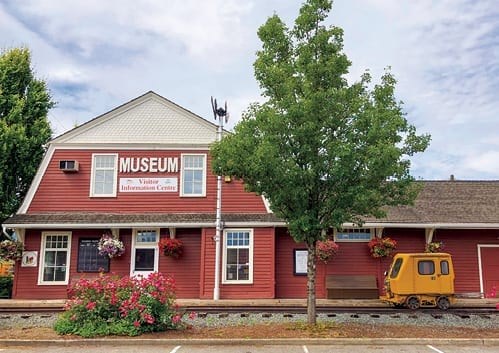
The museum is open to the public on a seasonal basis —May long weekend to Thanksgiving weekend—and is located inside the community’s historic Canadian Pacific Railway (CPR) station, built in 1893, one of the oldest structures remaining in the Agassiz-Harrison Valley.
Fast-forward to last November. During our weekly catch-up phone call, my mom mentioned an article in the November 13, issue of the Voice.
“We read something in the paper this week we thought you might like”—“we” being both she and my dad, who brought the article to her attention.
“A man wrote about being in an accident with a train in Agassiz.”
I nearly jumped out of my skin! My mind went racing. When did the accident occur? Who was this man? What was his tie to Agassiz? How could it be that a man now living in my home town was in a train accident just outside the train-station-turned-museum where I work in rural BC?
My mom mailed the issue of the Voice to me. Upon receipt, I devoured Robert Norminton’s Column Six article, “Things to avoid while driving: For example, trains.”
To recap, Norminton described how his 1939 cream-coloured Packard 120 convertible was hit by an eastbound train as he tried to cross over the double tracks into downtown Agassiz one spring evening in 1953, during a thunderstorm.
Norminton and his two passengers, Johnny Ewert and Jerry Huebert, were all working for the B.C. Electric Company, surveying a power line route along Harrison Lake, just a few kilometers outside of Agassiz. The trio was headed to the Aga Theatre to catch a movie. Luckily, everyone was all right, and Mr. Norminton eventually received $687 compensation for his car.
Now, our museum houses the archives for the local newspapers back to 1923. I wanted more details about this accident, so I started combing through the issues of The Agassiz-Harrison Advance.
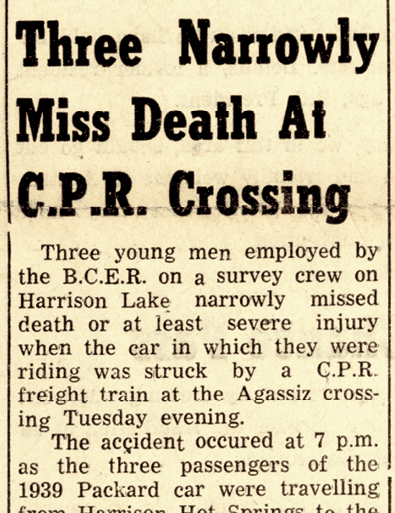 Sure enough, there it was. I found an article in the March 25, 1953 issue that documented the accident.
Sure enough, there it was. I found an article in the March 25, 1953 issue that documented the accident.
“Three Narrowly Miss Death At C.P.R. Crossing” read the front-page headline.
We learn that the accident occurred the day before, on Tuesday March 24, at 7 PM, and that this was the first documented train and car accident at this crossing.
Naturally, I wanted to know which movie this group was headed to see. I located the March 18, 1953 issue of The Advance. The Aga Theatre ad indicates that The Flying Missile, starring Glenn Ford and Viveca Lindfors, was showing at 8:15 PM, on Tuesday March 24. This film that you’ve never heard of was already on its second and possibly third run, having been released over two years earlier, in late 1950. IMDB describes it as a “fictional account of the role played by a somewhat impetuous US Naval commander in developing the first means of launching missiles from submarines." How was this not instantly an Oscars contender?
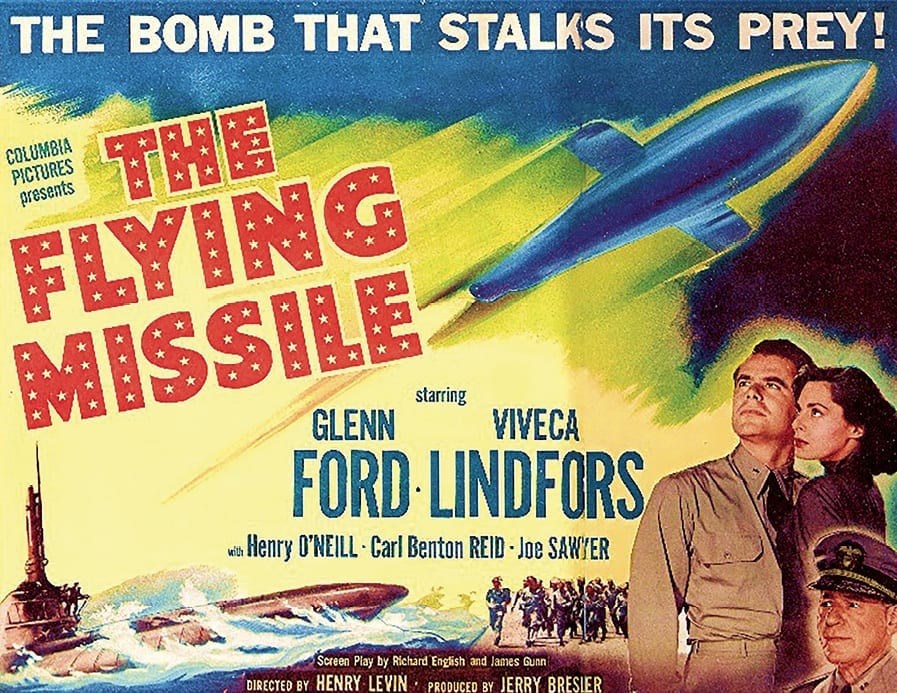
I’m guessing that Norminton, Ewert, and Huebert would have aimed to grab dinner or a snack at one of the local eateries in Agassiz prior to taking in the show. But we’ll never know as they never made it! As a side-note, the Aga Theatre building still stands on Park Avenue, in downtown Agassiz. After several incarnations, it’s currently a private residence, located next to the Agassiz Legion.
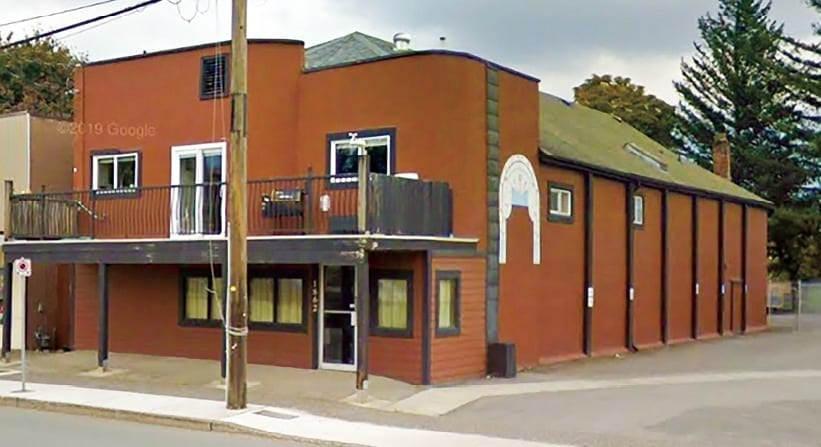
Near the end of his article, Norminton notes that he had “provided the locals with just the ammunition they needed” to finally get crossing gates and a signal on the Highway 9 CPR crossing. Through my research, I was unable to locate the subsequent accidents in 1953 that Norminton mentions. I did, however, find the date of installation of the new crossing gates and signal—December 10, 1957.
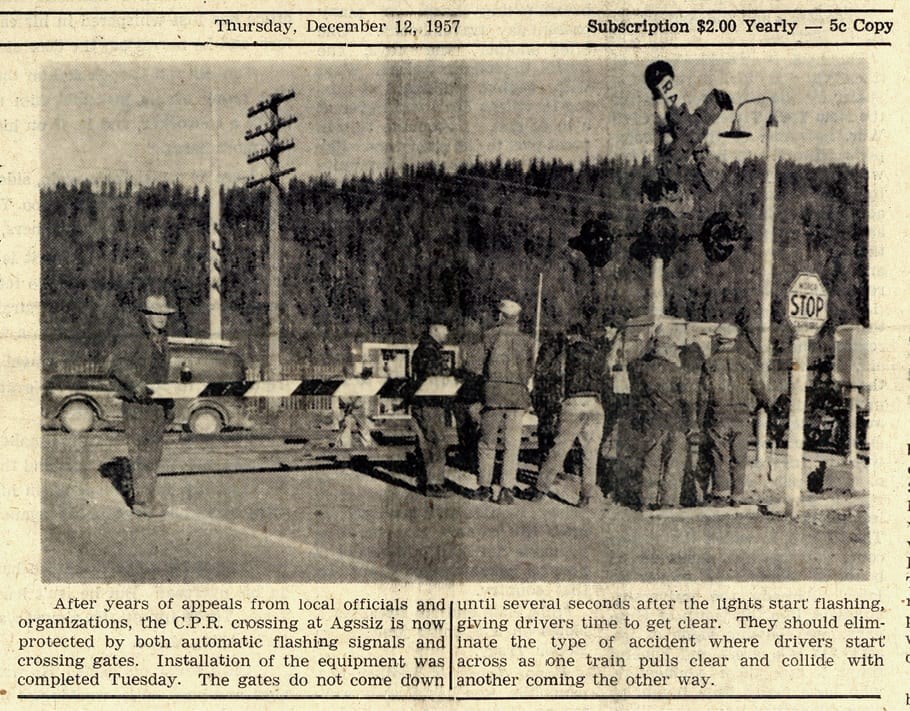
On the front page of The Advance from December 12, 1957, there is an image with the following caption:
"After years of appeals from local officials and organizations, the C.P.R. crossing at Agassiz is now protected by both automatic flashing signals and crossing gates. Installation of the equipment was completed Tuesday. The gates do not come down until several seconds after the lights start flashing, giving drivers time to get clear. They should eliminate the type of accident where drivers start across as one train pulls clear and collide with another coming the other way."
It took four and a half years from the time of Norminton’s accident until safety gates and a signal were installed at this crossing! The more things change, the more the speed of government stays the same.
If you are ever out in the eastern Fraser Valley of BC and you want to check out the scene of this accident, please stop by and visit me at the Agassiz-Harrison Museum. It’s always great to see a friendly face from “back home,” and I’d be happy to give you a tour of our museum and archives! We are all connected in this world in mysterious ways. ♦


